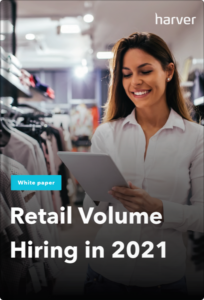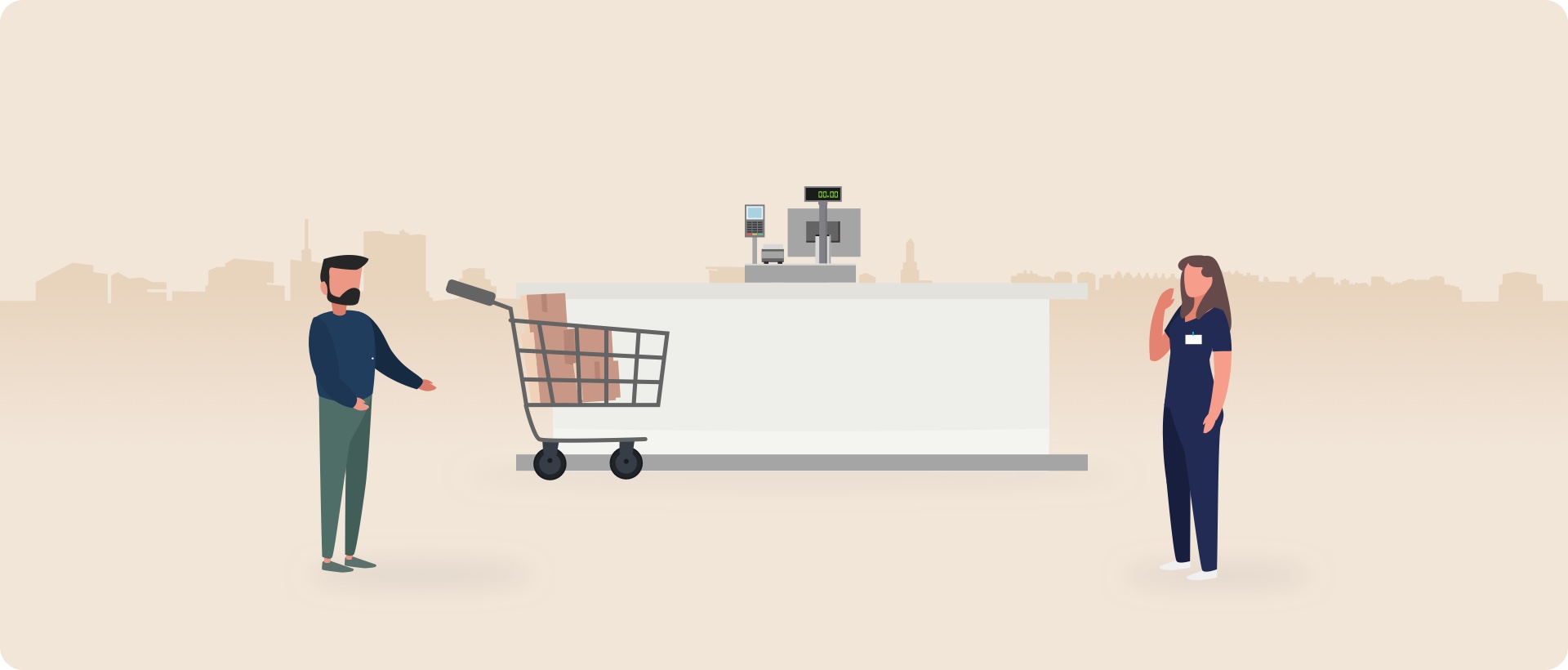When we talk about the frontline workers responding to COVID-19, most people imagine doctors, nurses and other healthcare professionals first.
However, amidst the chaos and uncertainty that a pandemic like this brings, it’s important not to forget about essential retail workers as well. Essential workers in retail expose themselves to the risks of the virus each day to help supply everyone with the necessities—and for that, we owe them a debt of gratitude.
Of course, it’s not only gratitude that we owe; it’s also protection and support. Taking the right steps to ensure employee safety is the best way to thank your workers in essential retail. What safety measures can you take to protect workers in your mission-critical retail business? We’ll share some tips!
What’s in?
- Educate your employees and customers
- Implement enhanced sanitizing and disinfection
- Provide proper protective gear
- Encourage social distancing
- Consider limiting store hours
- Offer a curbside pickup option
- Adjust your sick leave policy
- Ensure access to health insurance
- Hire temporary employees for extra help
- Consider increasing compensation
- Utilize self-checkout when possible
Like what you see?
Don’t miss out. Subscribe to our monthly digest to get the latest TA and TM resources delivered right to your inbox.
What constitutes essential retail?
You may be wondering what’s considered “essential” in retail in times of crisis. The answer might surprise you as the essential retail goes well beyond grocery stores—there are so many types of retail businesses that are essential in order to keep the world safe and well-stocked.
While the definition varies, the National Retail Federation (NRF) recommended that these are considered essential retail businesses:
- Grocery stores, convenience stores, pet supply stores, wholesale clubs
- Local, regional and national transportation and delivery services
- Facilities supporting interstate delivery of goods, distribution centers, warehouse facilities and highway rest stops
- Pharmacy and healthcare services
- Agricultural and farm retail stores to purchase livestock feed
- Gas stations, auto supply stores and auto repair facilities
- Hardware and home improvement stores
- Restaurants and other facilities that prepare and serve food
- Retailers that supply essential business supplies and technology
Ways to ensure employee safety in essential retail
There are certain steps you can take to make the retail environment safer for everyone from employees and vendors to in-store customers. The Occupational Safety and Health Administration (OSHA) published many of the COVID-19 guidelines below to protect the health and safety of employees in essential retail. So how can you implement these at your store?
1. Educate your employees and customers
You can educate both your employees and customers on the steps they should take to protect themselves and others. Tell customers to shop alone and infrequently. By minimizing trips, they can minimize risk for everyone! Also, remind them not to come when they’re feeling sick, to keep their distance and to avoid paying with cash when they can.
There are multiple ways you can reach employees and customers to share this information. For example, many stores are putting up flyers with COVID-19 shopping tips near store entrances and in employee break rooms. You can also send out emails to your subscribers and post on various social media channels to help spread the word.

Design a flyer with detailed information on shopping tips during the COVID-19 pandemic and make it well visible throughout your store. (Image source)
2. Implement enhanced sanitizing and disinfection
One of the best ways to ensure employee safety during the coronavirus pandemic is implementing enhanced sanitizing and disinfection. Make it a point to clean surfaces more often than normal, especially frequently touched areas like conveyor belts, keyboards, phones, light switches, and credit card pin pads.
Most of all, it’s important to thoroughly disinfect shopping cart handles as often as possible. Provide hand sanitizer and antibacterial wipes near the front of the store so that customers can clean them off before shopping. You can also set up hand-washing stations and encourage workers to wash their hands frequently with soap and warm water for at least 20 seconds.
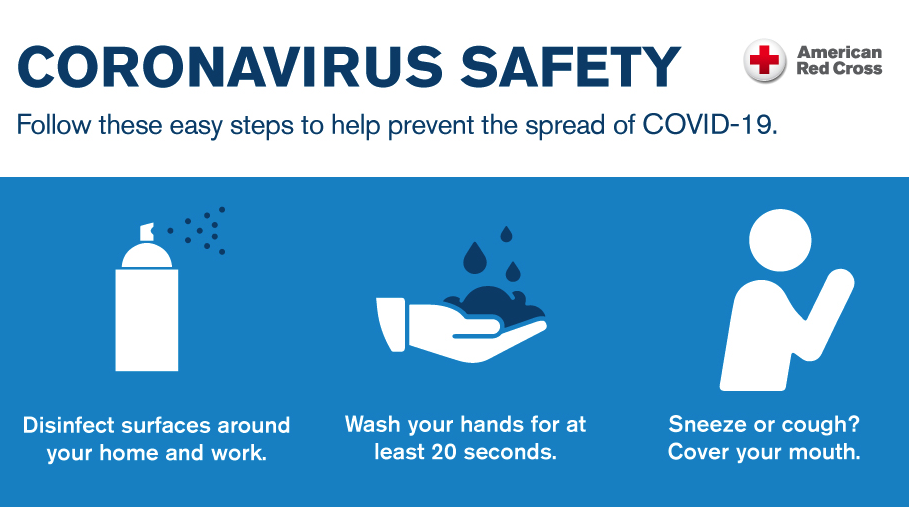
You and your employees can curb the spread of COVID-19 by adhering to a few basic hygiene rules, which should always be at hand at your workplace. (Image source)
3. Provide proper protective gear
While there’s an undeniable shortage of proper protective gear, you still have to try to offer what you can to your retail employees. For example, you can install plexiglass shields at cash registers to separate employees and customers. Or provide reusable cotton face masks (with detailed instructions on how to clean them) and disposable gloves to workers.
You can also take it a step further by providing safety vests that say something like “keep your distance” on the back. Additionally, don’t forget to provide your employees with enough uniforms to change them between each shift to ensure they’re properly laundered and stay as germ-free as possible.
4. Encourage social distancing
Practicing sensible social distancing is critical to prevent the spread of coronavirus. Essential retail employees should maintain six feet between coworkers and customers whenever possible. Many retail businesses are using tape to put marks on the floor to encourage people to maintain proper distance in checkout lines. Some stores are even making aisles one-way to limit foot traffic.
You can also limit the number of people allowed in your store at any given time. For example, by counting the shopping carts being used or installing a retail traffic counting system that uses sensors at entrance areas to count visitors.
(Bonus: This investment will still be useful after the pandemic, not only because the measures will probably last for some time but also because it allows you to track the success of marketing efforts and customer conversion!)
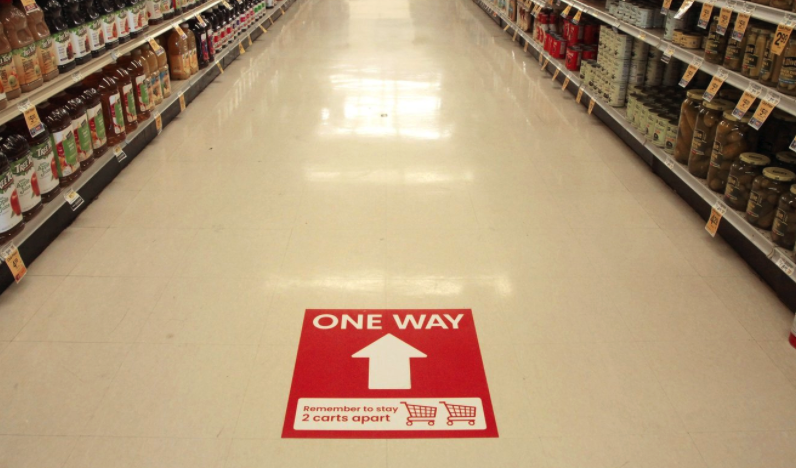
The Safeway in Seattle is using floor stickers to ensure social distancing at their stores. (Image source)
5. Consider limiting store hours
Of course, you want to be open and available to provide customers with essential supplies and keep your business afloat during a difficult time. With that said, several essential retailers are opting to limit store hours to allow more time for stocking shelves and sanitizing the store thoroughly. While you definitely don’t want to skimp on disinfection, you don’t want your employees to work all night cleaning and restocking the store, either!
Determine new times for opening and closing and share them with employees and customers to avoid confusion. You can also introduce special store hours like Trader Joe’s and other retailers to protect the most vulnerable groups like older adults and those with underlying conditions. This ensures they’re able to access the necessities with minimal risk.
6. Offer a curbside pick-up option
For many people, curbside pick-up is the safest, most convenient option to get what they need while maintaining social distancing. That’s why a number of essential retail businesses are offering curbside pick-up for online orders.
Online shopping with curbside pick-up means less interaction between employees and customers. It also cuts down the number of people shopping in your store at any given time, which is ideal for practicing social distancing in high-traffic places.
But it’s not only grocery stores offering contactless curbside pick-up. Major retailers like Target, Walmart, Best Buy and Lowe’s are all implementing curbside pickup for household essentials, groceries, and business supplies. Some are even creating senior-only hours for curbside pickup as an additional way to support the more vulnerable elderly population.
7. Adjust your sick leave policy
One of the most important steps you can take to ensure the safety of essential retail employees is to encourage workers to say home if they are sick. Big-box retailers like Walmart and Kroger have modified their sick leave policies by implementing a “COVID-19 emergency leave policy.”
Make it a point to adjust your sick leave policy so employees feel safe and don’t have to come to work sick because of fear of a lost paycheck or a layoff. However, don’t only focus on COVID-19 or make the policy contingent on confirmed test results. Your employees might not be able to get tested or may suspect allergies or influenza as a likely culprit of early symptoms.
Take Rebecca, a 35-year-old grocer in Manhattan, for example:
“We’ve had two cases at my store alone and I’ve worked alongside both of them in the last two weeks. But because I can’t just get a test to make sure, I just keep working and waiting until symptoms show.”
Encourage employees to stay home when they’re sick and avoid returning to work until well after symptoms are gone. You might even require employees to have their temperature taken before allowing them to return. If an employee has been in very close contact with an infected individual, ask them to take paid sick leave and stay home.
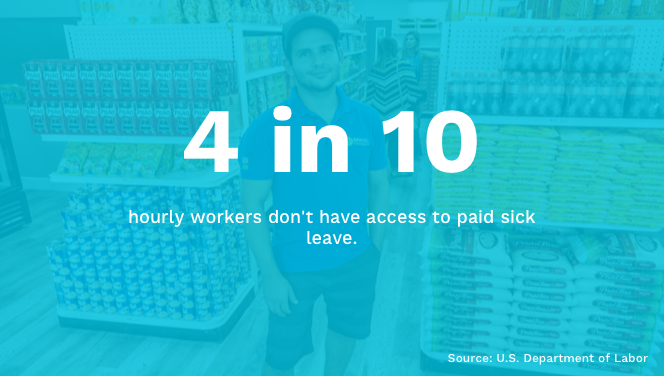
No access to sick leave can inadvertently help spread the virus which you as an employer must avoid.
8. Ensure access to health insurance
As essential retail workers, your employees are already putting their health and safety at risk each time they come to work. The last thing they need is to worry about a lack of health insurance and proper care if they contract coronavirus.
Ensure your employees have access to health insurance to make sure they get the care they need and don’t have to come to work when they’re sick because of financial worries. Many insurers are waiving rules and treating the COVID-19 pandemic as a special enrollment event, enabling employees to enroll in group health plans outside of the normal window.
9. Hire temporary employees for extra help
Another great way to ensure employee safety in essential retail is to hire extra employees to help out on a temporary basis. This will help divide and conquer during a stressful time—especially when it comes to cleaning and disinfecting the entire store.
You can look for people in the industry who are out of work to help others too. For example, hire temporary workers that got laid off from hospitality businesses or non-essential retail stores. This way, you can then balance your shifts and workload better and keep providing the services that are essential to so many.
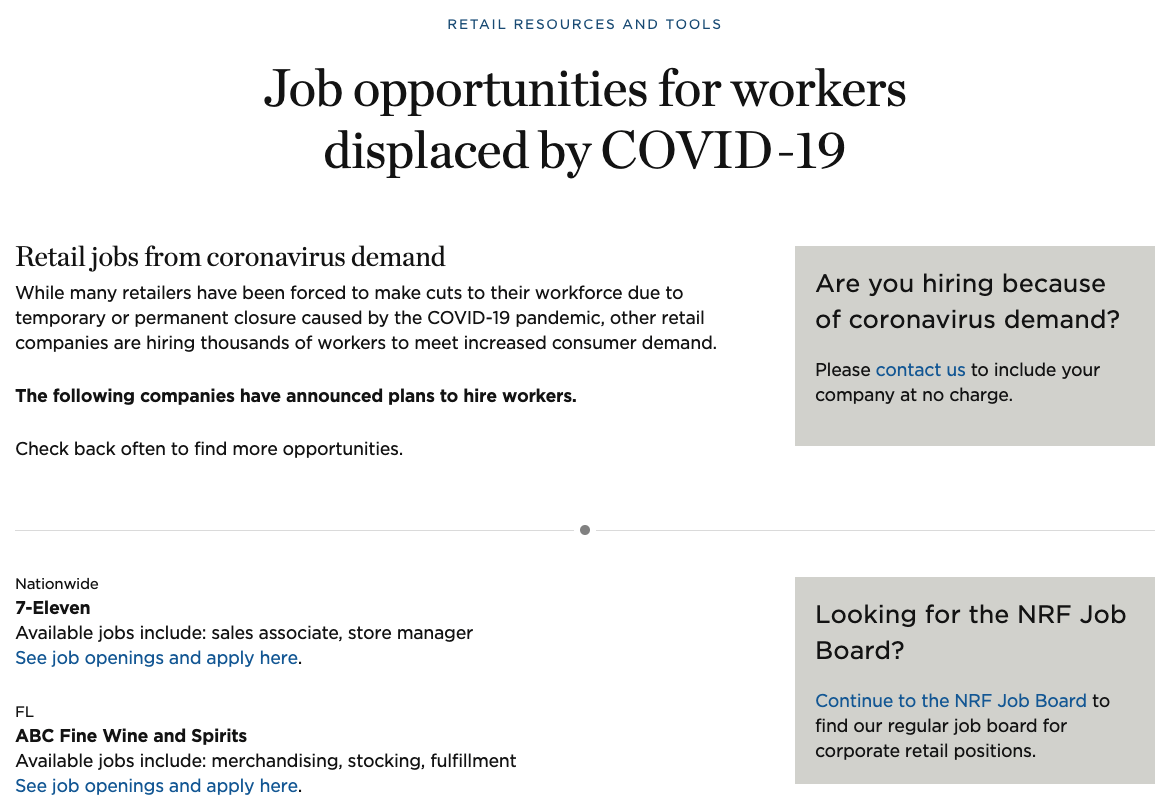
NRF has created a page listing available jobs for displaced retail workers. Get your business listed there and on similar pages to spread the word about your temporary (and permanent) openings.
10. Consider increasing compensation
The coronavirus pandemic has put a spotlight on the low wages often earned by retail workers. According to ZipRecruiter, the average hourly pay for retail workers in the U.S. is only $11 an hour.
A number of retail businesses like Whole Foods, Safeway and Target are offering an additional $2 per hour of hazard pay to adequately compensate essential employees on the frontlines. Others are offering one-time bonuses to thank and support essential retail employees during such an extreme time.
11. Utilize self-checkout when possible
Not every store has a self-checkout option; however, if you do in your store, this is a great time to encourage the use of it as much as possible. Limit the number of cashiers if you can and ask them to help customers with self-checkout (from a distance of course!) or put out signs with tips for those who may not be familiar with the technology.
In conclusion
Your retail business might be considered essential—but taking the proper precautions is essential as well. You can’t compromise on employee safety, especially during a critical, risky time period like this one.
That’s why you need to keep coming up with ways of ensuring that your employees are in as little risk as possible. If they feel like you’re doing your best to protect them, they will also be able to focus on their work better—and so will you! And when times are tough, remember: we’re all in this together.
- White paper
Before you continue!
Don’t forget to grab your free copy of our new white paper on the digital transformation of retail volume hiring. Learn about:
- The challenges currently shaping the retail volume hiring space
- How to align your recruitment strategy with today’s reality by adopting technology
- The four building blocks of a fully digital recruitment process
